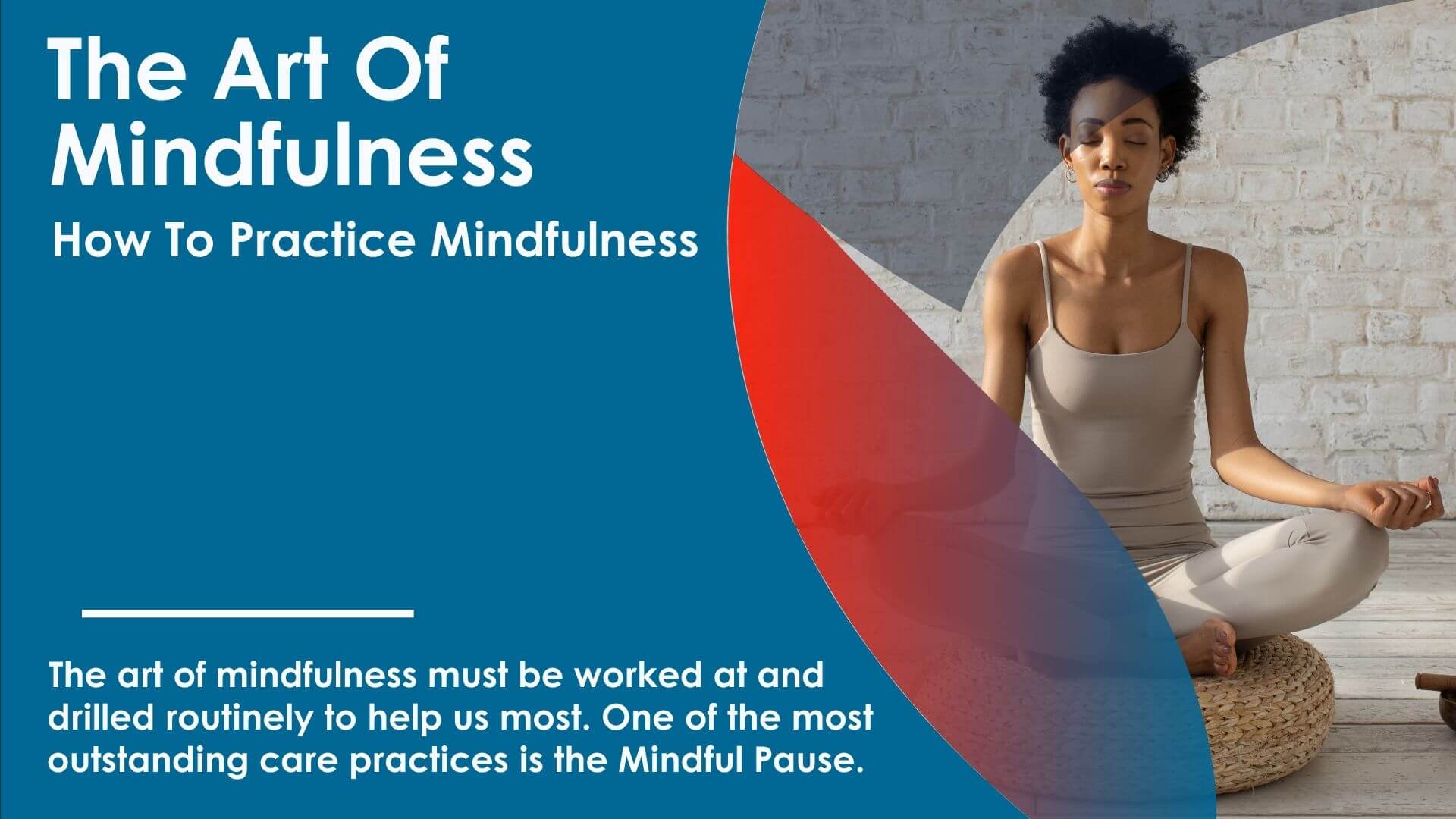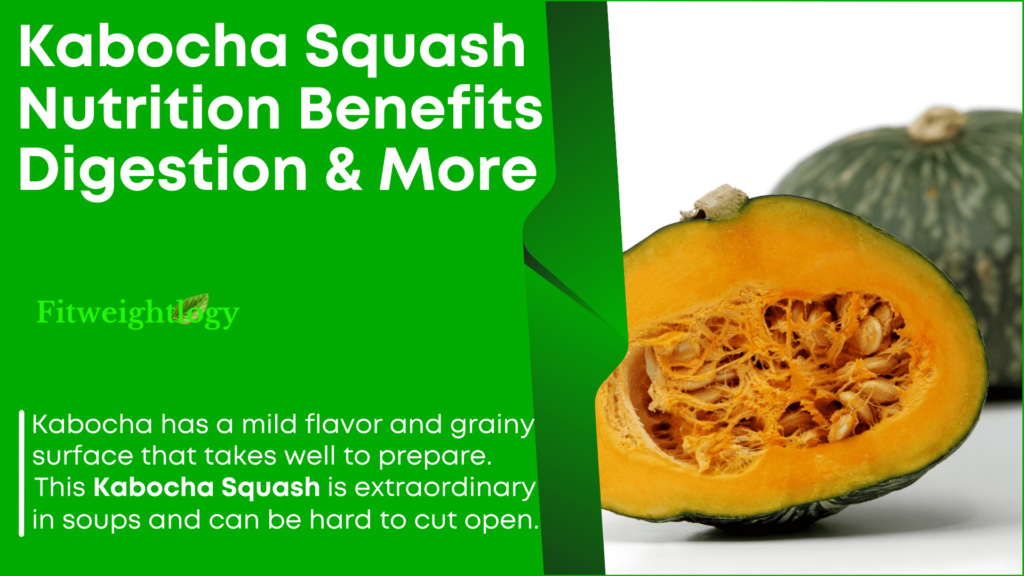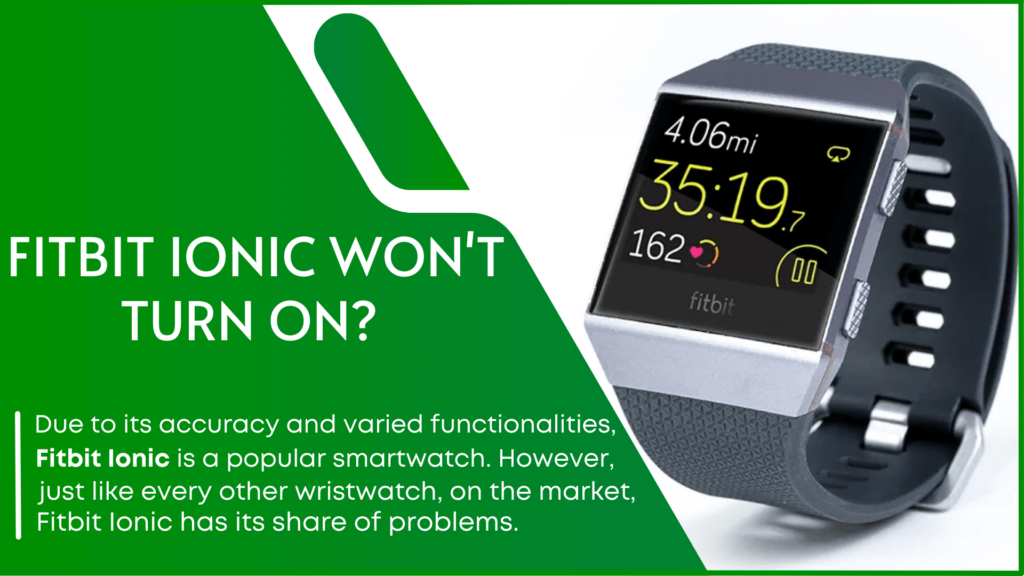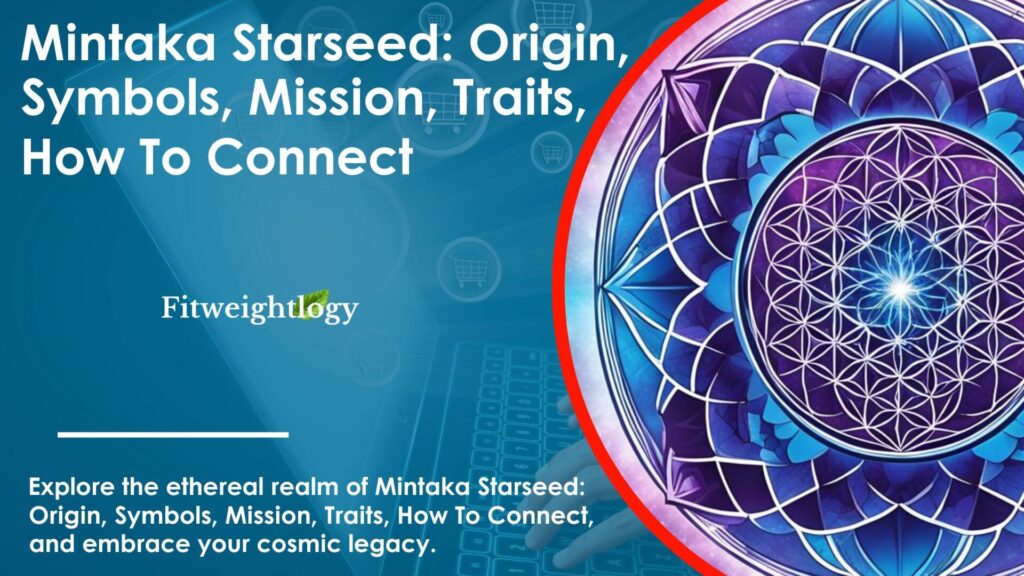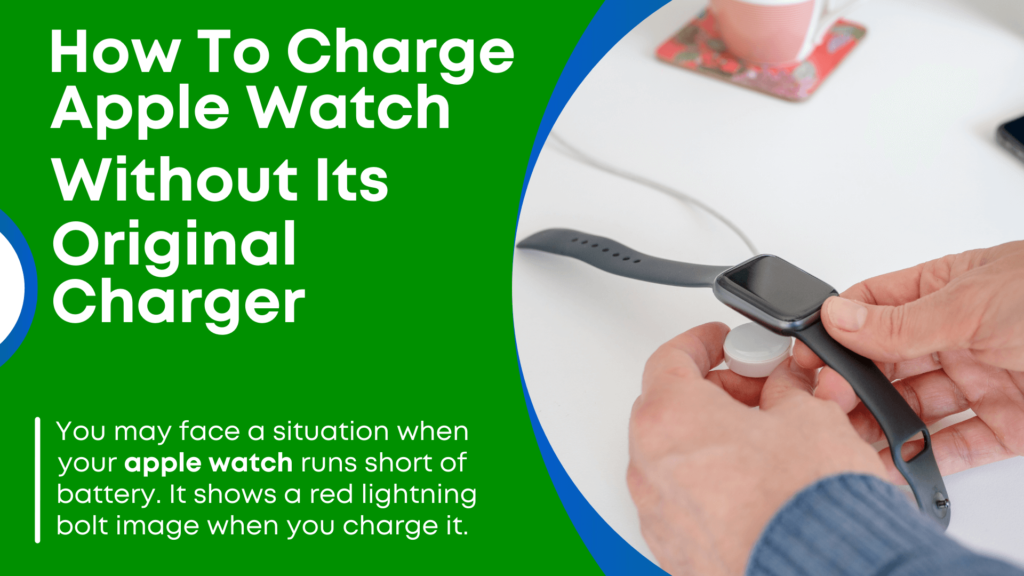The Art of Mindfulness: How To Practice Mindful Life And Mindfulness For A Better Life & Health
What comes to mind when the word art of mindfulness‘ is mentioned in the selection from Thich Nhat Hanh? It is a state of being courteous with an issue at hand. Your ears or eyes initiate this sense of awareness.
This awareness is more within the person based on the outside happenings. Our thoughts and feelings are prevalent throughout the day and carry through to our sleeping hours.
Do you know what your mind does while washing the dishes, driving a car, and playing a sport, or do you let it wander? Have you ever sat down to eat with others, only to find that you’ve finished the whole plate when they might have just had a few mouthfuls?
As you say to yourself, the uncomfortable feeling is, “I must have looked like I was gulping the meal down in some sort of race.” However, the very act of being mindful while you were eating may have changed how you ate.
Being aware of something as you are doing it can dramatically change how you do it. Negative behaviors can become positive.
Practice Mindfulness and Meditation for a Better Life
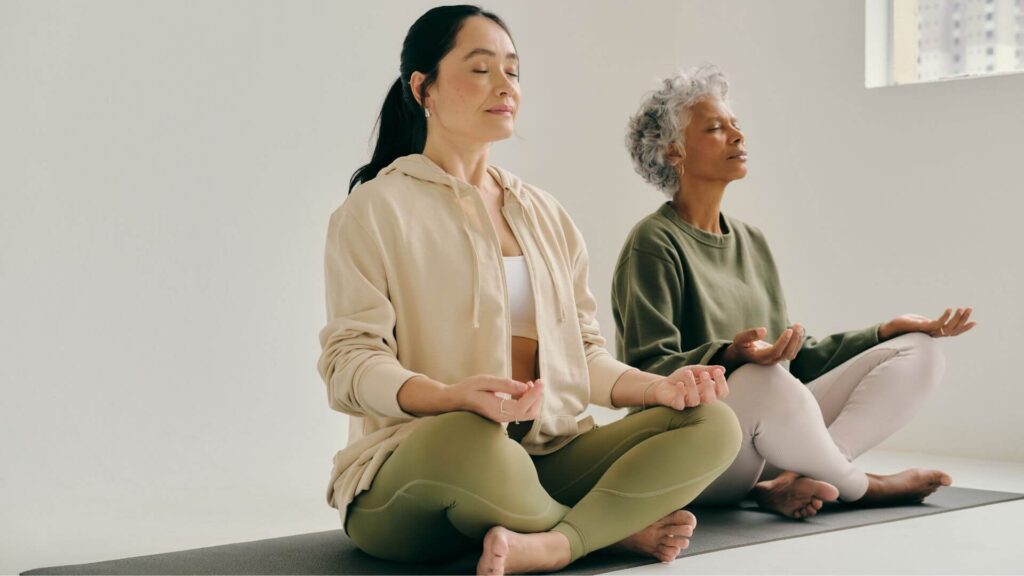
The problem with many people is that they need to consider this state of Mindfulness due to the rush to understand what is happening.
The difference between trying to understand the situation and Mindfulness is that the latter brings you to a state of awareness, which makes you more open to responding and avoiding the temptation to be negative.
When people are mindful, they are concerned with an immediate happening. Mindfulness empowers the mind to focus on an issue at hand. It is done neutrally without conclusions being made.
Mindfulness originates in many cultural and philosophical traditions, which recognize that these moments of unfocused awareness contain intense knowledge. In modern psychological practice, mindfulness techniques, including the core buddhist concept of mindfulness are a powerful tool for reducing stress levels and healing our psyches.
We can cultivate Mindfulness using various techniques, including Yoga, mindful breathing, mindful walking, listening to music (music therapy), or spending time outdoors (ecotherapy), all of which have a meditative component.
Since Mindfulness involves an unfocused awareness by the mind, it brings awareness to the person of what is happening in him. So, it is a concept embedded in a person, both philosophical and cultural.
It has been proven that the art of Mindfulness can be a potent tool that, when used, can reduce the stress level and better the psyche of the person.
Mindfulness training can help us gain greater awareness of many aspects of our beings rather than simply paying attention to those most emotionally pressing. Enhanced awareness leads to an increased sense of mastery over mental processes.
It improves our mood and lowers the likelihood that we will brood on our past failures, which can lead to losing confidence in our health-related choices.
Mindfulness can be improved or developed by employing one of the following methods; Yoga, mindful thinking or walking, and music therapy – listening to music. In addition, one may opt for ecotherapy, which involves taking time and being with nature, or even “mindful breathing.”
Applying Mindfulness To Challenges and Mindful Breathing

Leadership is rewarding but can also be exceptionally challenging and complex. When operating in uncertain times, especially those related to organizational change, crisis, or any unfamiliar situation, the ability to remain fully immersed in the present is crucial.
Leaders must solve problems that are often complex and troublesome to those involved. In addition, team and organizational dynamics result in differing opinions, and leaders may need help facilitating cohesion and finding an appropriate strategy for achieving solutions.
In these situations, leaders may become contributors to conflicts and produce unintentional negativity while simultaneously receiving incorrect information from team members.
A challenging, uncompromising role such as this can be challenging for leaders to respond to; leaders will want to appear strong and decisive to their team members and find ways for them to communicate and work effectively while being unsure themselves of the best action to take.
Mindfulness is helpful during intense and stressful situations such as these. When Mindfulness is strong, leaders can respond to these situations less reactively and consciously, accept the negativity of the problem, and find a positive response.
For example, applying Mindfulness to see emotional reactions during intense situations often highlights the typical emotions of fear and anger.
Rather than instantly reacting to these emotions, becoming mindful makes it possible to accept the damaging emotions’ existence and consciously choose appropriate responses to situations rather than instant counterproductive reactions.
Mindful meditation is, however, different from concentration meditation. Later, the person must restrict their thinking to a particular point or focus. This focus can be a word, a thing, or even a thought. The thought, imbued with the energy of mindfulness, is ensured to stick to that focus by all means.
The difference is that mindful meditation covers a more significant scope of thought. In this, the mind will focus on both internal and external stimuli. The point is to recognize any change occurring either within or without the person.
Guide to Practice Mindfulness for Rest
How could you bring your Yoga practice into the workplace? Your company may scoff at the idea of Yoga at work. So, here is a way to be at peace with yourself and practice Yoga without drawing attention to it.
In some companies, mentioning meditation, Pranayama, and Mindfulness practice during work hours might get you called into the “front office” for a lecture on company policy.
It is a shame because these Yogic practices would help many companies become more productive and focused and create an atmosphere of harmony for everyone.
The most significant causes of production loss at work are daily distractions and absenteeism. Many employees need a break from work, and the more stress in the workplace, the more time employees will take off.
Some forward-thinking companies have introduced Yoga classes during lunch or an extended break. However, if your company does not have a Yoga program for its employees – let’s think about practicing Pranayama alone.
Many yoga students understand the concepts of natural breath more quickly than Mindfulness.
Practice Mindful Parenting to Decrease Your Stress
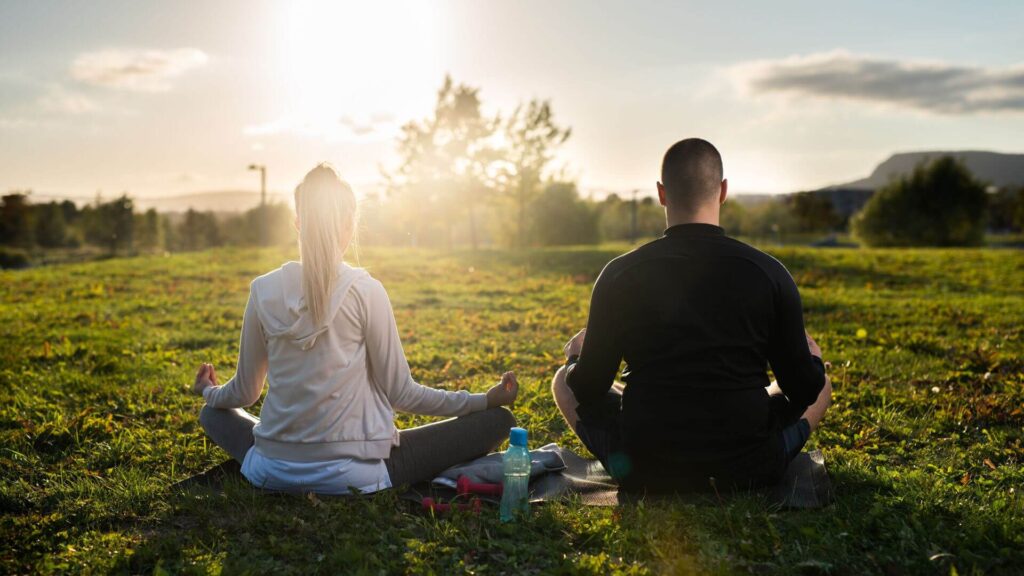
Trust
Trust your ideas, your feelings, and your intuition. Permit yourself to stop worrying about everyone else’s opinion of your kids and parenting style. Trust in others comes more easily when you follow your wisdom. You may even start trusting your kids more.
Acceptance and Awareness
Be conscious of your thoughts, but don’t let them define or control you. Focusing on negative thoughts leads to stress and worry.
Instead, be aware of your ideas without letting them take over; instead of worrying about why your kid is struggling with a teacher, notice and try to accept it. Your discomfort will decrease, and any action you must take will become clear.
Beginner’s Mind
As yoga instructors like to say, you’re practicing with the body you’ve come in with today. Let go of the memory of how things were yesterday and expectations for how they should be today or tomorrow.
Be open to seeing your kids as they are right now. You notice new things daily when you look at them with a beginner’s mind.
Letting Go or Non-attachment
After acceptance, it’s calming to let go. You’ll have nagging, unpleasant thoughts or situations that do not go as you’d like. You need not be attached to a particular outcome. If your kid is having peer problems, don’t push away the discomfort with immediate action.
When you don’t have to change and fix things all the time, energy, including the energy of mindfulness, becomes available for other pursuits. Neither you nor your kids have to fix everything.
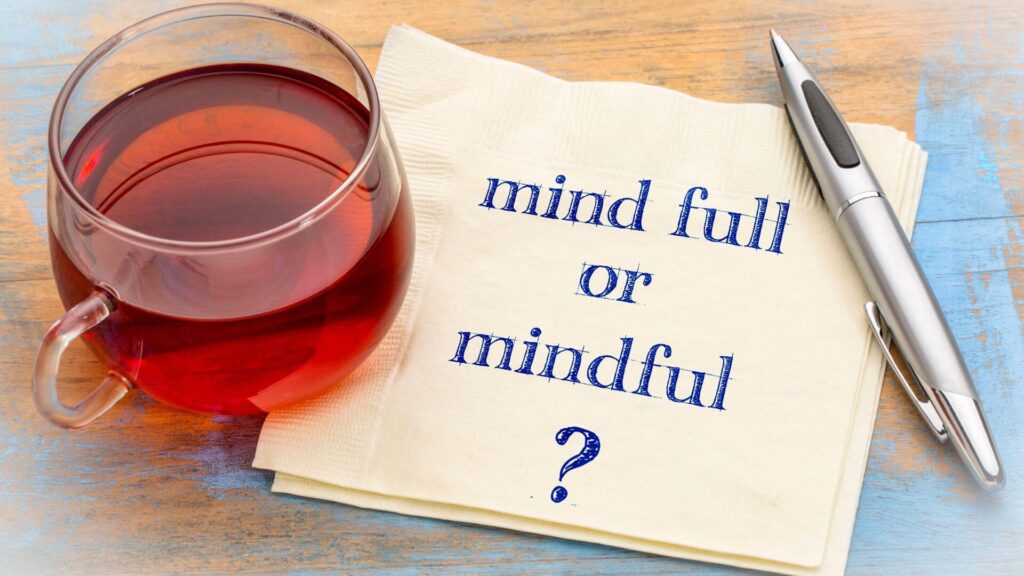
Non-judging
Take in your kids as they are without allowing predetermined beliefs and desires to color your perceptions.
It’s much easier to like and accept your kids when you’re not constantly judging them against your internal standards of right and wrong, appropriate and inappropriate, and good and bad. Instead, be curious and interested without considering, practicing mindfulness for the western reader.
Plant Your Feet Flat On the Ground
If you’re wearing high heels, slip out of them. Maneuver your feet so they are as flat as possible. Now, let your arms fall wherever it is comfortable. For most people, this will be with their forearms resting on their thighs. Notice every part of your body in contact with something that isn’t yours.
It will involve your feet, obviously, as well as your legs and backside where they are touching your chair. If you are leaning back, notice that. Look around and see everything about your body, all while trying to keep the sensation of being in contact in your mind.
Success is critical in life, irrespective of whether you have a business or a job. Though honing your strategies, skills, and practices will provide success, what is within you is an essential factor that genuinely affects or brings success.
Living in the present, rather than in the past or the future, has always ensured a better life, and this is one aspect that is true for your business or profession.
Mindfulness is a habit or technique that allows you to live and breathe in the present, where you can observe all the factors related to the present, be it a smell, thought, sound, emotion, taste, or just about anything.
What makes Mindfulness spectacular is that it allows you to observe these factors around you without judgment or attachment, making it a critical element for your overall success.
Practicing the habit of Mindfulness is not easy because it is achievable only if you approach it systematically and regularly. However, practicing this simple technique benefits your overall growth, development, and success.
How often do you get “worked up” over what might happen? If you’re like most people and me and are honest, the answer is probably every day! What a total waste of time. We spend more time worrying about the future or regretting and rehashing the past than living in the present moment.
We fly through the days on autopilot, often forgetting to apply the practices of mindfulness that could enrich our lives. Doing things automatically and needing to be more present and aware. We don’t pay attention! The crazy thing is that we only have this moment; we waste more than we appreciate and live to the fullest.
Art of Mindfulness

The art of Mindfulness makes a person more aware of the condition, which places such a person in a better position to act according to what the eye or the ear has communicated.
The problem with many people is that they need to explore and bypass this area, ignoring the signals. Instead, many prefer to understand the situation first, which leads to negative conclusions in most cases.
The mind tends to focus on an issue deliberately. We refer to this as Mindfulness at the point of concentrating on a particular incident in a specific moment. Mostly, it does this without the aim of passing conclusions about the matter.
You may be wondering where the mindfulness concept originated from. Well, it has its origin in cultural and philosophical traditions, particularly those related to Buddhist teachings. The mind brings awareness to the entire person of what excellent or dangerous may be looming.
A person’s psyche and stress level have been known to reduce drastically when mindfulness techniques are correctly applied.
There are different ways to enhance the art of Mindfulness. Common methods include Yoga, echo therapy, music therapy, mindful breathing, and thinking. All these are known to be meditative.
• Mindfulness, as taught in the plum village tradition
So, how can you get started with Mindfulness?
Firstly, this will be perfect for you if you are new to trying meditation techniques or general meditation. Just stop for a second, take three deep breaths while focusing on your airflow, and realize that they are a conscious experience with body activity within the mind.
Try this. Next time you make a cup of tea, focus on each sensation your body has and feel yourself reach for the cup or mug effortlessly like you are in complete flow: nothing but the job in hand, giving complete focus to each stage of the process.
Then, hear the different sounds made and let them gently rest between your ears, all the time being in complete flow.
The beauty of this is you can dedicate your attention to a straightforward action like making a cup of tea or coffee. Take a deep breath, and as stated earlier, focus on nothing but your breath. Allow a wave of calm and relaxation to spread through your body.
Gently release the breath and feel the tension move away from your body. Allow yourself to stay in this pose for a few moments as you soak up that good, and relax deeply. relaxation feeling.
Then, when you are ready, slowly get up and carry on with your day; try moving a little slower than before to keep those good sensations with you.
One great way to practice Mindfulness is to replace dissatisfied thoughts about what you could or should have done or what you wish you had with thoughts of gratitude.
Focus on how much you have and not what you don’t have. Another strategy is to focus on your breathing – the rhythm and the way your lungs fill and empty.
How does the sun feel on your back? Look – look – at a flower with the energy of mindfulness. Take time to slowly enjoy your food- how it looks, smells, and tastes- and savor it. Enjoy the feeling of your muscles moving and stretching as you walk or exercise.
Benefits of Practicing Mindfulness
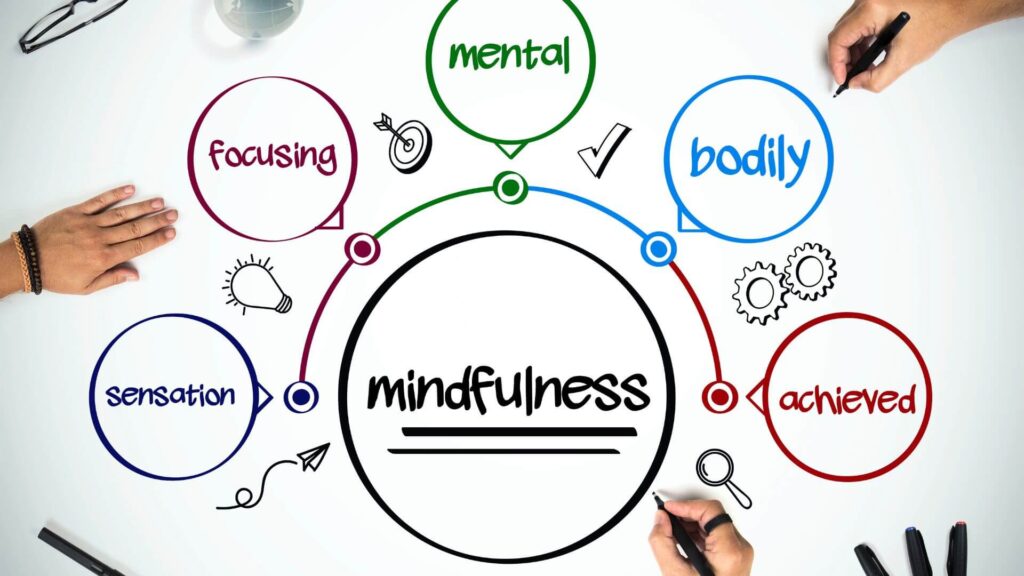
Reduces Stress: Most of our problems are often exacerbated by stress, which is built into them. Reducing the amount of stress we deal with daily and looking at the factors that aggravate this stress from a distance can help you understand how to overcome it while also helping you realize how to use it to your advantage.
Mindfulness can help reduce stress by allowing you to become calm and think about your day in a planned manner.
In addition, it increases awareness of self and empathy for self: In our routine lives, we are often unaware of the various traits and habits that we display, which may or may not work in our favor.
Mindfulness helps you better understand yourself, which lets you control behavior that is not helping you. For example, you may often be your worst critic, and through Mindfulness, you can learn to empathize with yourself without falling prey to victim syndrome.
Mindfulness refuses to allow you to judge or blame yourself, as these are extremely negative to your overall success, highlighting the core buddhist concept of mindfulness.
Mindfulness Helps Listen and Engage In A Better Way
In business or a profession, it is essential to truly listen to others, which people often forget for various reasons. Mindfulness helps you hear better and transforms you into an individual who can engage better with the team or others in any group, making it a successful partnership.
Increases clarity of thought and focus: Another essential benefit of Mindfulness is that it helps improve the transparency of thinking and focus, given that you are looking only at the present.
Practicing Mindfulness has several other benefits that are crucial to your success. However, it is up to you to try this practice, as Thich Nhat Hanh delivers a life changing perspective, and see if it will benefit you. It is equally important to understand that maximum benefit comes with practice, and you can’t expect any magic to happen overnight.
Practice Mindful Meditation For Better Health
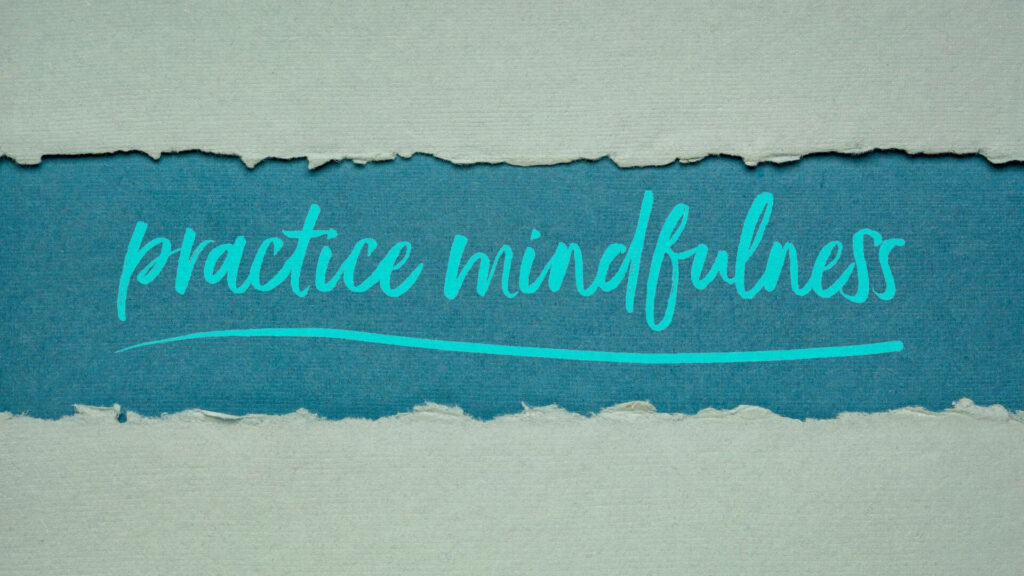
The health benefits of meditation, whether secular or spiritual, have long been recognized in the East. Moreover, these benefits have been successfully tested in the scientific community’s rigors with excellent results.
More and more peer-reviewed research on meditation confirms that it is a viable method of improving health and psychological/emotional well-being, helping with issues ranging from cardiovascular disease, inflammation, and immune activity to pain, anxiety, depression, mental imbalances, and more.
As a relaxation technique, meditation offers many benefits. For example, it is well known in the medical world that stress reduction improves the condition of many disease states and helps significantly reduce health risks related to physical, mental, and emotional overload.
Risk factors for many diseases, including life-threatening heart disease and stroke, have been improved with regular meditation as a balancing and strengthening self-care modality.
Mindful moments always focus on the present, never the past or the future. Most thoughts are one step removed from the present moment because they focus on the past or future. Mindful moments always exist in the current space and time, a context often referred to as the “here and now.”
Mindfulness revolves around being fully involved in the here and now. Mindful moments are not thinking moments where you try to figure something out or judge it.
Mindful moments are non-conceptual because, during them, you merely note the occurrence of something and accept it for what it is. You do not consider what you are experiencing; you receive it.
The talking that goes on during mindful moments is self-talk. It is non-verbal and also known as sub-vocal speech. Essentially, self-talk is what you say to yourself when thinking or feeling something.
When people describe or write down self-talk messages, it adds a layer of interpretation and distance from them. Mindfulness is developed through informal and formal training activities.
Conclusion: The Art Of Mindfulness
The sole aim of mindfulness techniques is to raise a person’s awareness level. For instance, whenever a person with an addiction feels low or depressed, they immediately reach out to the substance of abuse for instant relief or gratification.
However, with heightened awareness, the person sees the craving from a detached point of view, and it is no longer an automated response. Breaking a destructive habit begins a journey toward complete recovery and sobriety.
Mindfulness practices also bring in a lot of physical benefits for a person with an addiction. Exercises like meditation and Yoga result in a radical change in the physiology and mind of a person.
On a physical level, it regulates blood pressure and sugar levels and significantly reduces cortisol. It also increases serotonin levels and influences mood and behavior in a person.
Posted in
Welcome to Fitweightlogy! We are an optimum review website of all the best products associated with weight loss, healthy life, fitness, tips, and motivations. We are a quickly developing organisation given that we typically put our visitors first. A customer-focused experience has regularly been our objective, and we value our comprehensive policies, which have placed us in a domain well beyond our competitors. On this website, we assist our visitors in reaching their desired weight, appearance goals and live a healthy lifestyle, as well as save money and time by meticulously researching and evaluating the market, assessing the available products, and producing informative recommendations based on factors such as quality, availability, price and more. Furthermore, our passion is to assist you in choosing the best possible product through our product reviews.

